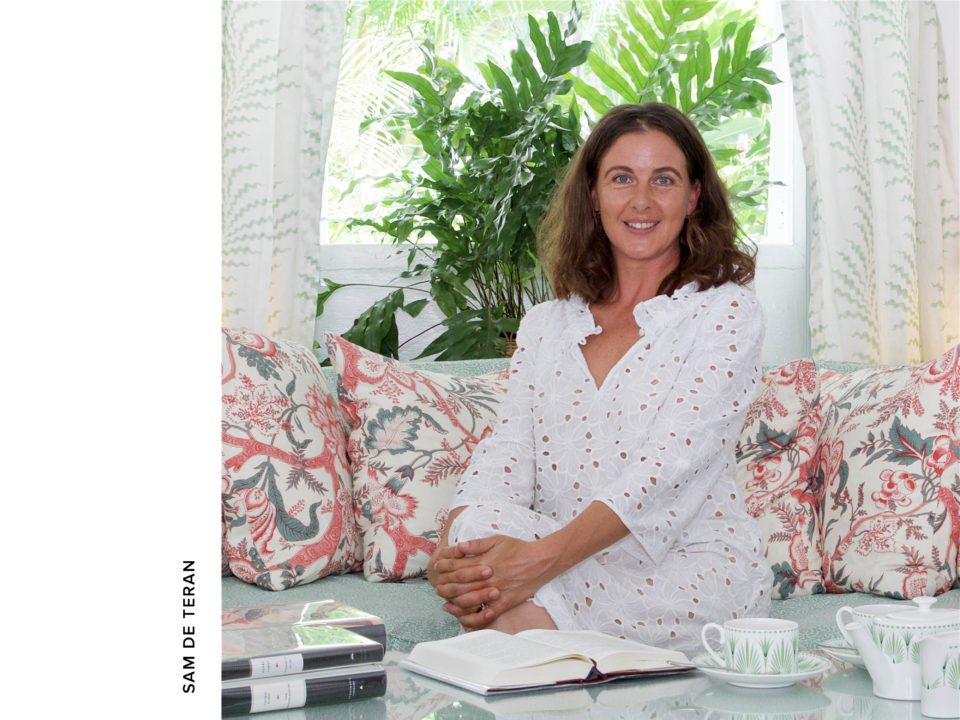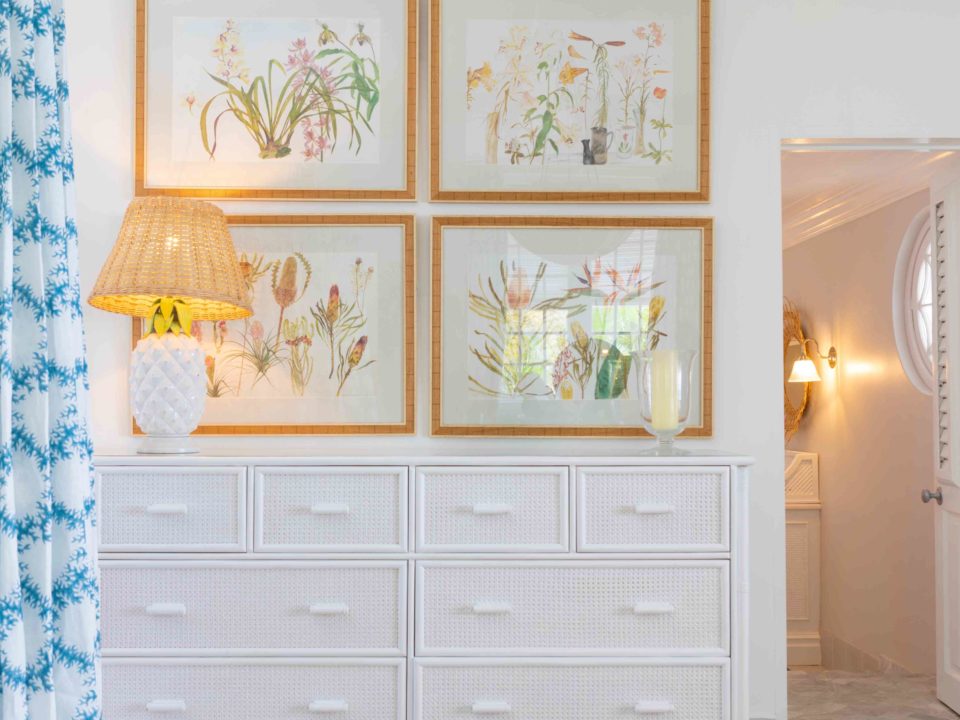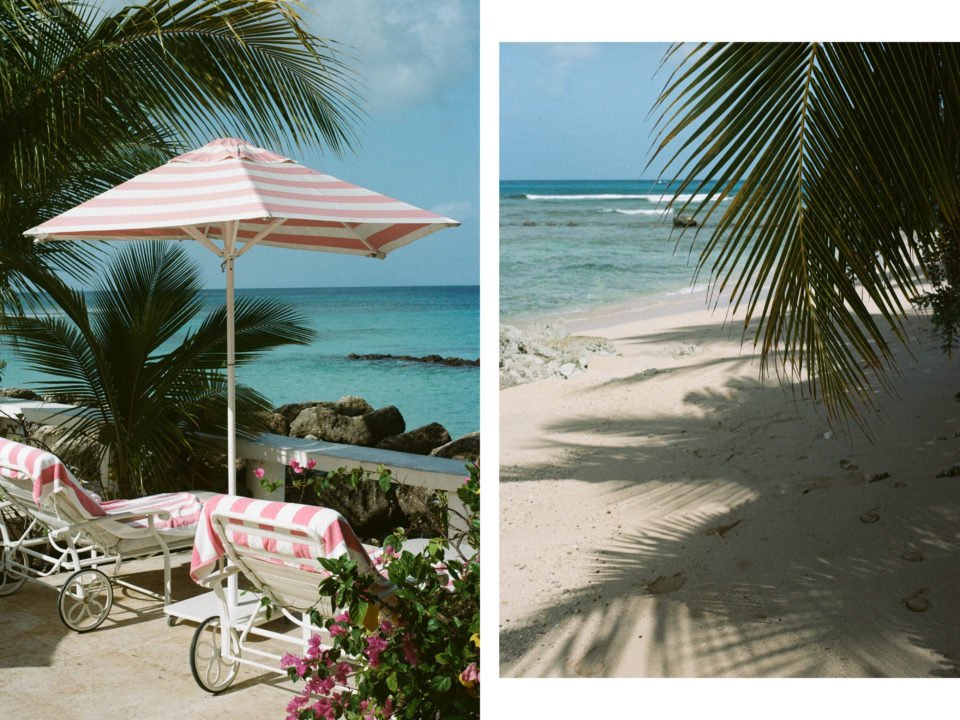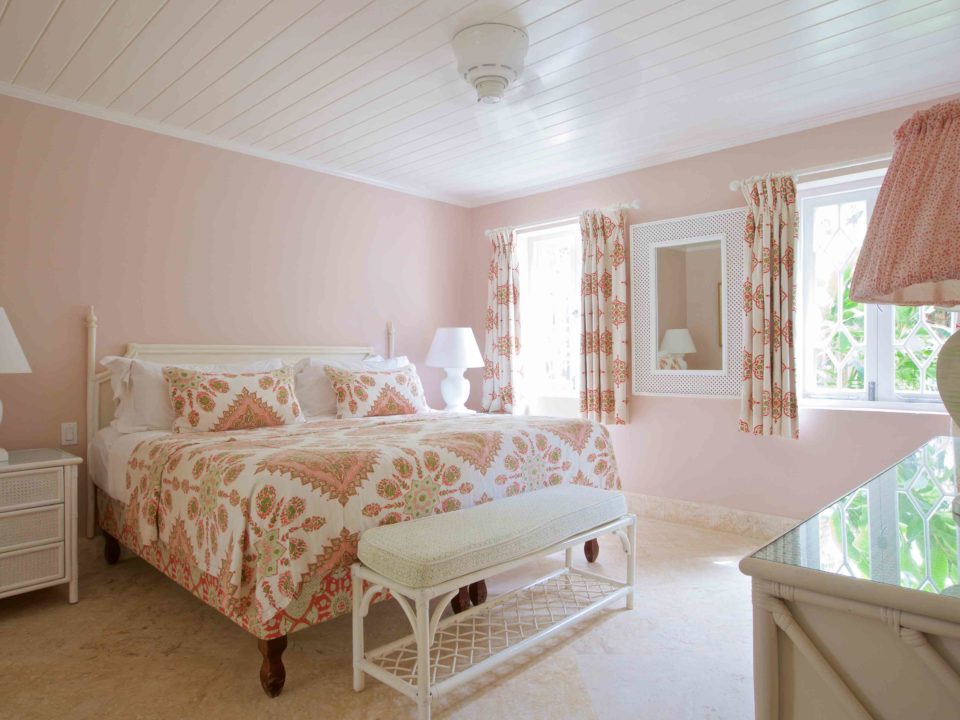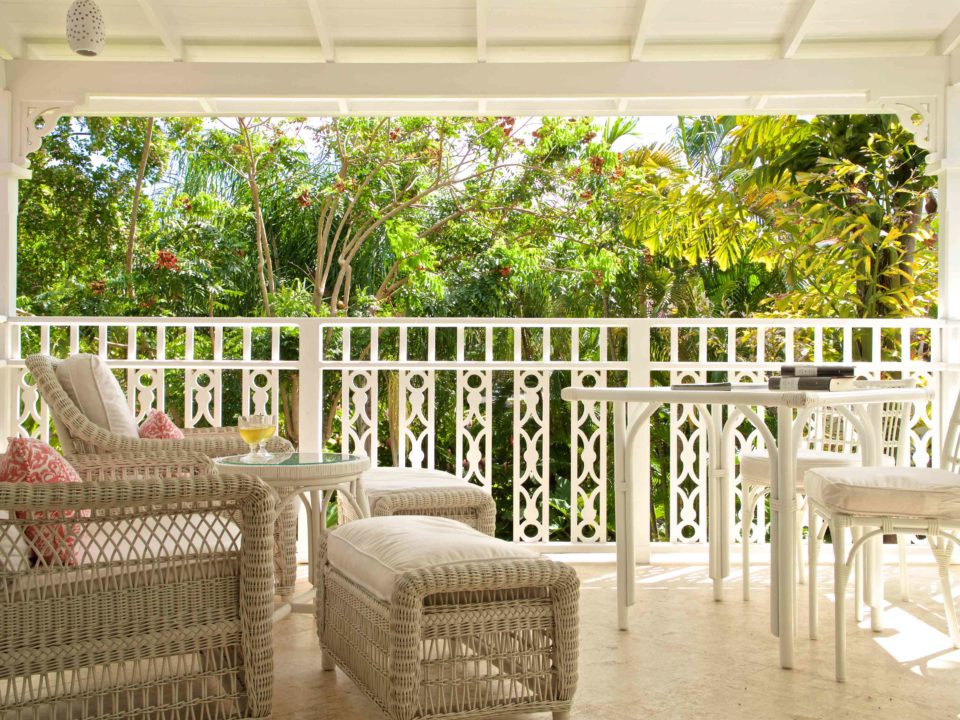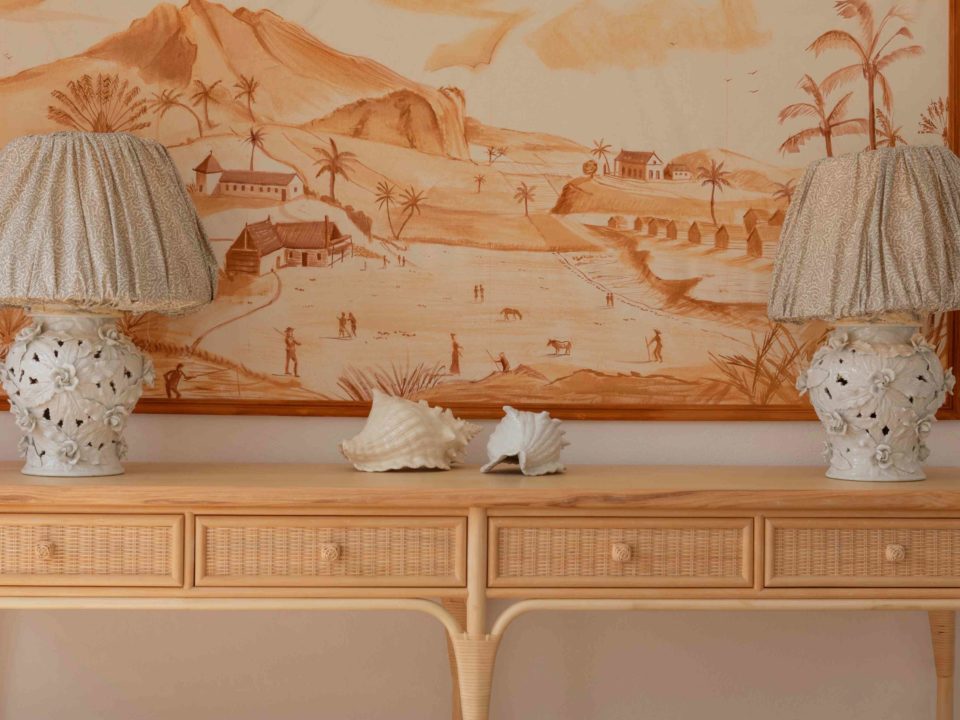If its secluded strip of golden sand, coral stone facade or lush tropical gardens aren’t enough to make you fall for Cobblers Cove in Barbados, wait until you meet the woman behind this iconic hotel’s new chapter.
Sam de Teran, its owner and creative director is not, it’s fair to say, one to be pigeon-holed. She cut her teeth in fashion, opened a store on London’s Fulham Road and designed ski wear inspired by early Bond movies. The brand’s ultra chic status was cemented when, fittingly, Sophie Marceau wore it in The World is Not Enough.
Her talents don’t just lie with the visual. De Teran has a way with words and penned bestselling novel Soldier Dog (written under the name Sam Angus) which tells the tale of a boy soldier and his messenger dog, set against the backdrop of WWI. Rumour has it a movie adaptation is on the cards.
Sam’s passion for interiors, though, surfaced when she took on the mammoth task of breathing new life into Barbados’ delightfully pink lady. The Great House, as Cobblers Cove is also known, was built in the 1940’s on the site of an old Quaker battery station, using the steel of the old island railway for its structure. De Teran has spent more than five years painstakingly restoring it to unveil a dramatic new look while retaining its heritage and charm.
Drawing inspiration from the history of the building, the island and the fauna of its breathtaking gardens, de Teran deployed delicate and intricately woven rattan and hand-printed fabrics to lift the décor to newly refined heights while Soane Britain sourced stand-out furniture. There is a healthy dose of playfulness, too: fern-inspired console tables, shell-shaped chaises, crisp white rattan day beds, glimmering silver and glass hurricane lanterns, ripple-skirted tables, twinkling basketwork lanterns, and fabulous gauzy billowing curtains printed with parrots and climbing vines. 007 would feel right at home…
So, Sam, what made you fall in love with Cobblers Cove?
The island itself, the people, the music, their sense of humour. Plus, the site of Cobblers has some special magic or happy ley lines all of its own.
If Cobblers Cove was a person who would it be?
Cobblers was one described as the Dowager Duchess of the West Indies; the Maggie Smith of the Caribbean, unchanged and unchanging. That was said by Sue Lawley in The Financial Times I think. And yes, Cobblers does have an element of a British national treasure about it but also a bit Slim Aarons and a bit Babe Paley, softened with West Indian whimsy and charm.
Describe the design in five words
Gracious, tranquil, charming, chic, comfortable.
Tell us about your transition from fashion to interiors
I worked in the fashion industry for 20 years or so and the move into interiors happened entirely accidentally but felt very natural and easy. It has happened at a time of life when my attention was turning a little away from fashion. Though I am still designing clothes it has been good to widen my remit and move into interiors, china and furniture too.
Do the same design principles apply in fashion and interior design?
They are both three dimensional and they both have to do a job; to be comfortable, flattering and lasting. So yes, in many ways, the same skills are used. With clothes that means they must be easy and light and not constricting, with furnishings that means they must be comfortable, nothing done just for show or to make a statement. In fashion clothes must reflect the character of the person, in interiors furnishings should reflect and enhance the environment. On top of that I like both fashion and furnishings to have a sense of fun about them and easy, unflashy glamour. I like things that can’t easily be replicated or bought off a shelf.
What was your vision for the revamp of Cobblers Cove?
Underpinning everything has been the desire to retain the charm and character of the place. Not only to retain them but to build on them. You have to tread very carefully when doing up an old place so as not to lose these things; they’re fragile and if you rush in and make sweeping changes you can easily lose them. Charm and character are particularly important to small hotels precisely because they are unavailable to larger hotels or chains. If you develop the charm and character of a place you increase its uniqueness, the sense of it being the only place of its kind. I think this is important to a particular kind of traveller today; the traveller who doesn’t want to go to place of which there are many identical iterations in different parts of the world.
How do you want people to feel when they step into the space?
That they can breathe, that their shoulders relax, that they know from the first step inside, when they glimpse the handmade rush matting, rattan lampshades and the waiting cocktail, that everything is going to be just right.
Where did you source the décor?
Some pieces are vintage pieces found in Miami, mostly the table lighting. Fabrics are hand-printed in our colours and come from the US, everything else is pretty much sourced locally.
How about the signature pink stripe fabric?
This fabric is specially woven for us in Italy.
How closely do you work with local artisans?
Very closely, everything possible is made on the island. Our rattan furniture was made on the island in the Seventies. It was recently refurbished by the same company that made it and is still in use. We are lucky in Barbados to have a strong body of woodworkers, basket makers and metalworkers. We source everything we can here, from them directly.
Which pieces do you find most irresistible?
I love the metal monkey chairs on our terrace. These were made locally by a man who was apprentice to artist Oliver Messel when he was working here. They are made to a design of Messel’s, the notes for which he still had and produced for me. They are curvy and light and comfortable and very charming.
Where is your most treasured spot?
There’s a little table with two rattan chairs in the corner of the terrace of the suite Marley. You are so close to the trees that you live almost among the birds and you look both ways, out over the gardens and towards the sea. I can see all the comings and goings of guests, staff, birds, boats and monkeys and can spend hours there.
Can we take any items home?
Yes! Our bathrobes in blue and white or pink and white stripe seersucker, our green and white mugs, prints of the original botanical artworks hung on the walls at Cobblers and the full range of our very pretty chinaware can be purchased online from Royal Crown Derby.
What do people want from travel now?
We are still seeing a little of the fly-and-flop traveller but on the whole people want to engage with the place they are visiting, with its music and culture and people. Luxury travel is much less about tangibles such as complimentary slippers or liquor bottles in the mini bar, and much more about abstract things such as privacy and peace along with the promise of some fun or new friends or experiences or learning something new; either a skill or learning about a new place and culture.
Describe something we will only discover in Barbados…
Well, the obvious one would be the mischievous Bajan green monkeys. Also the native black-bellied sheep which actually have the hair of goats but are the most amusing sheep.
Seeking further inspiration? Explore our full Caribbean collection
Amira Hashish is an award-winning editorial director and writer with columns in Suitcase, The Independent and London’s Evening Standard, where she was formerly executive editor. Travel, though, is always on the agenda – whether it’s hosting Suitcase’s new podcast the Upgrade, or curating and hosting a regular series of talks on travel and design with Soho House. Amira is also the founder of creative studio Rapport which works with global design, real estate, lifestyle and travel brands to shape their narrative through compelling stories and experiences. And we’re very happy to call her our very own design editor here at Mr & Mrs Smith.


